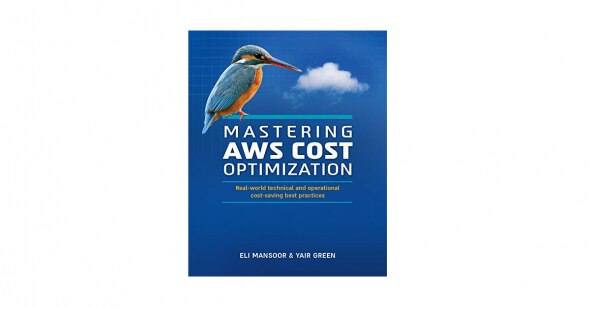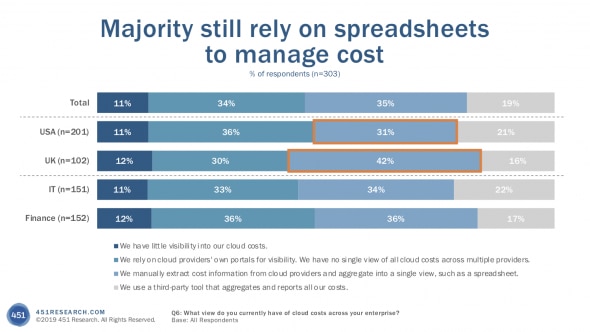Cloud cost control and optimization has become a leading issue for businesses. As the number of companies utilizing cloud increases, IT professionals are looking for ways to reduce their cloud costs.
Cloud infrastructure offers many benefits for organizations, but it also presents some challenges. Cloud computing benefits include:
Book a demo today to see GlobalDots is action.
Optimize cloud costs, control spend, and automate for deeper insights and efficiency.

- Efficiency
- Data security
- Scalability
- Mobility
- Disaster recovery
- Control
However, it’s also important to understand how moving to the cloud impacts organizations. A major problem that contributes to cloud cost management challenges is the difficulty organizations have tracking and forecasting usage.
Gartner estimates that organizations that have done little or no cloud optimization, are overspending by 70% or more. To address this challenge, organizations are shifting their focus to cost optimization, seeking to gain better visibility into their cloud spend, and deploying governing policies for cloud cost control.
Managing cloud infrastructures can be substantially more complex than traditional data infrastructures; however, cloud infrastructures have the potential to become highly optimized, intelligent systems that improve enterprises. Succeeding on the cloud means making the right business decisions and executing the right technological choices. At scale, these challenges get incredibly complex due to huge amounts of constantly changing data.
All these topics and more, are examined in the book called Mastering AWS Cost Optimization: Real-World Technical and Operational Cost-Saving Best Practices, co-authored by Eli Mansoor and GlobalDots’ own CTO Yair Green.

Why write this book in the first place?
Because cloud computing represents much more than new technology and tools. The costs of cloud computing are related to new pay-per-use pricing models, new consumption models, new operational methodologies, new tracking and reporting systems, and more. Traditional approaches to cost analysis and optimization simply do not apply to public cloud computing.
This book is intended to support you in overcoming what is currently considered one of the top challenges that organizations face in their transition journey towards public cloud: the challenge of cost control and optimization. This applies whether you are part of a technologically-savvy “born-to-the-cloud” team, or whether you are part of an enterprise organization taking its first steps towards public cloud adoption.
Reading this book will give you a better understanding of both the technical and operational aspects of the process. This ensures that you will succeed in taking advantage of advanced technology for building innovative, next-generation products, while doing so in an optimized and cost-effective manner. This book contains many proven technical, operational, and applications-related best practices.
All are real-world best practices that were implemented in the efforts of controlling and reducing the costs of our own cloud infrastructure as well as that of our customers.
Cloud costs management
The first step to taking charge of your cloud spending is being fully informed about your cloud costs and usage. With resources being spun up by people across your organization, this can be a complicated process, but one that’s essential for operating your cloud according to best practices.
In a recent study, 451 Research asked enterprise companies across the US and the UK what methods they use to view cloud costs across their enterprise. The responses broke down into four categories:

A surprising number of people responded that they have little visibility into their cloud costs. These companies most likely learn about their cloud costs when they get the invoices from their cloud vendors. That means the first time they find out about any overspend is one to two months after the costs were incurred — way too late to take corrective action.
The second limitation is one of customization. These tools are built to integrate with each individual cloud vendor’s offerings, which means cost and usage data is viewed from a foundation built on their service structure. As long as your team structure smoothly fits the cloud provider’s structure, you can get the data you want, but mapping that data directly to your organization becomes a little more complicated.
To follow best practices, you should be able to view your entire cloud infrastructure as it ties to your organization and team structure in a single location.
APIs and detailed billing data make it easy for companies to get incredibly granular data about their cloud cost and usage. Accessing AWS’ CUR file, for example, can be done with a few clicks and an S3 bucket. So it’s no surprise that the most popular method for viewing cloud costs is extracting cost information into a single view, very often in the form of a massive spreadsheet file.
And therein lies the danger of using this methodology for managing cloud costs. A CUR file can contain well over a hundred lines of data for each resource. For a small number of resources, a manual spreadsheet can be manageable. But as your cloud infrastructure grows, it won’t take long before that spreadsheet gets too massive to tackle manually.
Having a single view like a spreadsheet or a simple in-house tool also limits your options for viewing your cost data, sharing it with others and taking decisive action. Even something as relatively straight-forward as showing a team the specific cloud costs they incur becomes tricky when it’s all in one massive spreadsheet, and trying to view the data from multiple angles to uncover waste or optimization opportunities becomes almost impossible.
Who should read this book?
The authors recommend that everyone involved in a cloud project read this book. This include those undergoing their first cloud transformation projects, through early adopters in “born-in-the-cloud” companies”.
This book is a product of hands-on technical experience with managing large-scale cloud environments, and the operational experience gained from collaborating with various CCoE (Cloud Center of Excellence) units of large and global enterprises. This approach represents a new and unique combination of technical and operationally proven experience that will provide value to readers from all teams: DevOps engineers, IT operations, cloud and software architects, developers, QA engineers, product managers, CCoE team members, procurement, finance, business analysts, and others.
What will you learn?
- The Amazon Compute (EC2, Lambda, Container Services), Storage (S3, Glacier, EBS, and EFS), and Networking services pricing models.
- Best practices for architecting and operating your cloud environments for cost optimization and efficiency
- How to build applications that are lightweight from the perspective of resource requirements
- How to leverage AWS operational services (Service Catalog, Config, Budgets, Landing Zone, Tagging, CloudWatch, and others) for ensuring continuous governance and on-going cost efficiency
Conclusion
Cloud cost optimization is a complex topic which requires an understanding of cloud architecture, business objectives and cloud cost management best practices. If you want to learn more about these topics to cut cloud costs and drive revenue, read Mastering AWS Cost Optimization: Real-World Technical and Operational Cost-Saving Best Practices.
You can buy the paperback and Kindle editions of the book on Amazon.
Cloud costs can sometimes be difficult to estimate, due to the complexity of the cloud infrastructure. If you have any questions about how we can help you optimize your cloud costs and performance, contact us today to help you out with your performance and security needs.






